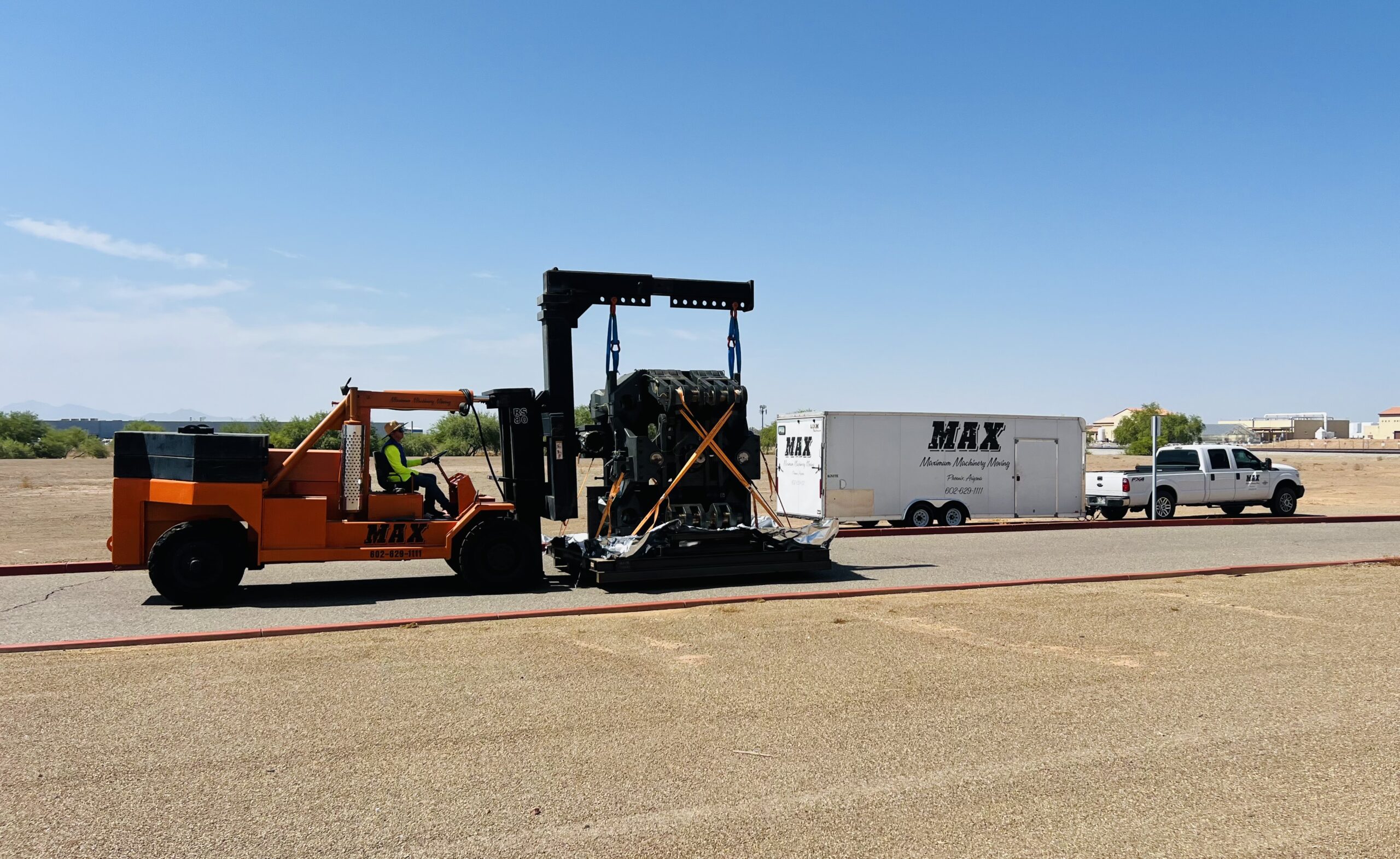Introduction
The installation and relocation of heavy machinery is a complex and challenging task that requires meticulous planning, specialized equipment, and highly skilled professionals. Machinery relocation, often referred to as rigging, is a critical aspect of many industries, including manufacturing, construction, and mining. This article delves into the intricacies of heavy hauling, the art and science behind moving massive machines, and the key factors that contribute to successful machinery relocation.
The Importance of Machinery Relocation
Machinery relocation is vital for several reasons:
Operational Efficiency: Relocating machinery can lead to improved workflow and productivity.
Expansion and Upgrades: Companies often need to move machinery when expanding facilities or upgrading to newer, more efficient equipment.
Cost Savings: Properly planned and executed relocations can minimize downtime and reduce costs associated with extended operational disruptions.
The Challenges of Heavy Hauling
Moving heavy machinery involves numerous challenges, including:
Weight and Size: Heavy machinery can weigh hundreds of tons and often requires specialized equipment for transportation.
Safety Concerns: Ensuring the safety of workers and equipment is paramount during machinery relocation.
Regulatory Compliance: Adhering to local, state, and federal regulations is essential to avoid legal issues and fines.
The Art and Science of Rigging
Rigging is both an art and a science, combining technical knowledge with practical experience. Key aspects of rigging include:
Planning and Coordination: Detailed planning is essential to ensure a smooth relocation process. This includes site surveys, route planning, and coordination with various stakeholders.
Equipment Selection: Choosing the right equipment, such as cranes, forklifts, and transport vehicles, is crucial for safe and efficient machinery relocation.
Load Securing and Stability: Properly securing the load and ensuring stability during transportation is vital to prevent accidents and damage.
Essential Equipment for Heavy Hauling
Several types of equipment are commonly used in heavy hauling, including:
Cranes: Cranes are essential for lifting and positioning heavy machinery.
Forklifts: Forklifts are used for moving smaller, more manageable loads.
Transport Vehicles: Specialized transport vehicles, such as low loaders and modular trailers, are used for transporting heavy machinery over long distances.
The Role of Technology in Machinery Relocation
Advancements in technology have significantly improved the efficiency and safety of machinery relocation. Key technological innovations include:
Computer-Aided Design (CAD): CAD software is used for detailed planning and visualization of the relocation process.
GPS and Tracking Systems: GPS and tracking systems ensure precise positioning and real-time monitoring of machinery during transportation.
Remote Control and Automation: Remote control and automation technologies allow operators to control equipment from a safe distance, reducing the risk of accidents.
Best Practices for Successful Machinery Relocation
To ensure successful machinery relocation, it is important to follow best practices, including:
Thorough Planning: Detailed planning and preparation are crucial for minimizing risks and ensuring a smooth relocation process.
Experienced Professionals: Hiring experienced and qualified professionals is essential for handling complex relocation tasks.
Regular Maintenance and Inspections: Regular maintenance and inspections of equipment ensure reliability and prevent breakdowns during the relocation process.
Safety Protocols: Implementing and adhering to strict safety protocols is vital to protect workers and equipment.
Relocation Machinery The Bristol Rigger Special
The Bristol Rigger Special 80-100 Industrial Forklift is a highly specialized piece of equipment designed for heavy-duty lifting and material handling tasks in industrial settings. Here are some key features and specifications of this forklift:
Key Features
High Load Capacity: The Bristol Rigger Special 80-100 can handle heavy loads, typically ranging from 80,000 to 100,000 pounds, making it suitable for moving large machinery and heavy materials.
Robust Construction: Built with a durable steel frame and reinforced components, this forklift is designed to withstand the rigors of demanding industrial environments.
Powerful Engine: Equipped with a powerful diesel engine, the forklift provides the necessary torque and power to lift and transport heavy loads efficiently.
Advanced Hydraulics: The hydraulic system of the Bristol Rigger Special ensures smooth and precise lifting, lowering, and maneuvering of loads.
Versatile Attachments: The forklift can be fitted with various attachments, such as forks, clamps, and lifting jibs, to accommodate different types of loads and applications.
Operator Comfort and Safety: The operator cabin is ergonomically designed, featuring adjustable seats, intuitive controls, and excellent visibility. Safety features include load indicators, emergency shut-off systems, and reinforced overhead guards.
Specifications
Load Capacity: 80,000 to 100,000 pounds
Engine: High-torque diesel engine
Hydraulic System: Advanced multi-stage hydraulic system
Mast Height: Customizable mast height options for different lifting requirements
Tires: Heavy-duty pneumatic or solid tires suitable for various terrains
Dimensions: Varies based on specific model configurations and attachments
Applications
The Bristol Rigger Special 80-100 Industrial Forklift is ideal for a range of heavy-duty applications, including:
Manufacturing Plants: Moving heavy equipment, dies, and molds.
Construction Sites: Transporting large construction materials and machinery.
Warehouses: Handling oversized and heavy pallets and goods.
Ports and Shipping Yards: Loading and unloading heavy cargo from ships and containers.
Rigging and Installation: Assisting in the installation and relocation of large industrial machinery.
Benefits
Efficiency: Capable of handling heavy loads efficiently, reducing the need for multiple smaller lifts.
Durability: Built to last, minimizing downtime and maintenance costs.
Versatility: Adaptable to various tasks with interchangeable attachments.
Safety: Enhanced safety features to protect operators and goods.
The Bristol Rigger Special 80-100 Industrial Forklift is a reliable and robust solution for industries requiring heavy-duty material handling and lifting capabilities. Its advanced features and high load capacity make it an invaluable asset in any industrial operation.
The installation and relocation of heavy machinery is a highly specialized field that requires a combination of technical expertise, practical experience, and advanced equipment. By understanding the challenges and best practices associated with machinery relocation, companies can ensure safe, efficient, and cost-effective moves. As technology continues to evolve, the future of heavy hauling looks promising, with even greater advancements in efficiency and safety on the horizon.
Maximum Machinery Moving specializes in rigging and heavy machinery moving services in the greater Tempe, Arizona area. Using advanced equipment like the Bristol Rigger Special 80-100 industrial forklift, we handle the installation and relocation of heavy machinery, even in buildings with overhead obstructions where cranes cannot be used. Our specialized equipment, experienced team, and commitment to seamless machinery relocation projects ensures safe, efficient, and precise handling of all equipment for any project big or small. Contact us today for a free quote.

